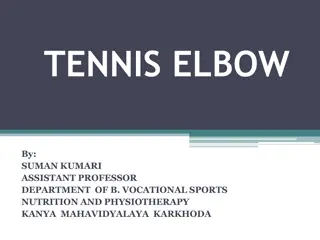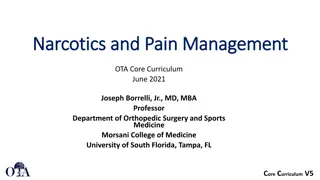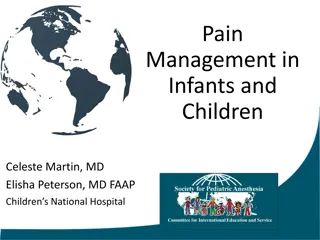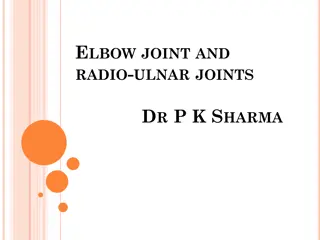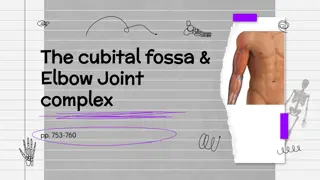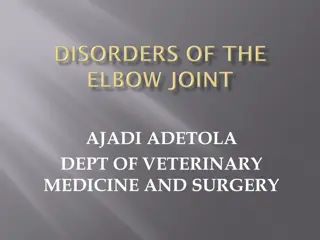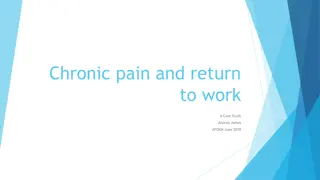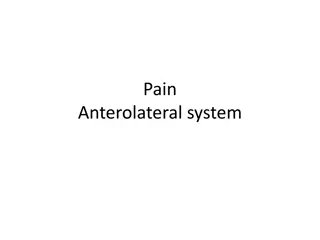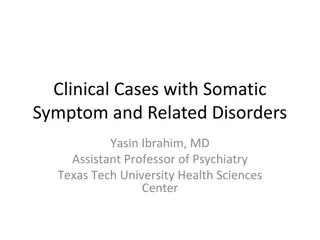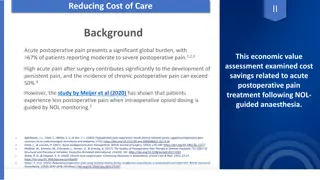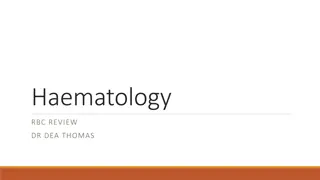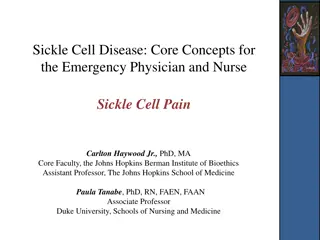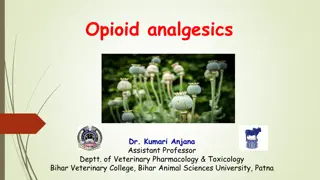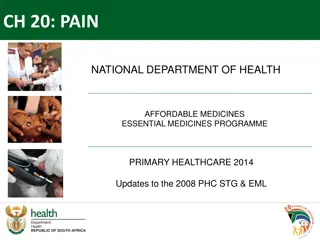Case Study: CBL Elbow Pain Assessment in a 62-Year-Old Man
A 62-year-old man presents with elbow pain, swelling, and discharge, worsening over 5 days without history of trauma. Further history reveals DM type II, mild schizophrenia, suicide attempt, and previous elbow fusion for fracture. Socially, he is married, jobless, a heavy smoker, with unclear alcohol consumption. Students are tasked with identifying risk factors, key history factors for differential diagnosis, and creating a potential list of differentials.
Download Presentation

Please find below an Image/Link to download the presentation.
The content on the website is provided AS IS for your information and personal use only. It may not be sold, licensed, or shared on other websites without obtaining consent from the author. Download presentation by click this link. If you encounter any issues during the download, it is possible that the publisher has removed the file from their server.
E N D
Presentation Transcript
CBL Elbow Pain Dr.Hisham Alsanawi Assistant Professor King Saud University
Instructions to the students Please read the case carefully, individually or in the group before you come to the Case Based Learning (CBL) session. Look at the objectives and try to fulfill these objectives. Prepare for the case well by referring to some suggested reading list. The tutor in CBL session will ask you to go through case and answer some of his stimulating questions to ensure that you have achieved the objectives.
Tutors role The tutor should try to keep the discussion focused on how to approach the case and make sure that the learning objectives given to the students are achieved. He/she should also try to observe punctually and should facilitate the process of learning by putting up some facilitating questions. During the sessions all the students including the day-dreamers should be encouraged to participate in the discussion too.
Suggested reading Turek's Orthopaedics: Principles and Their Application, 2005 edition, Chapter 6 lecture review
History 62 year-old man Regular follow up in clinic for elbow fusion Elbow pain, swelling, and discharge for 5 days It is getting worse with time No hx of trauma
Objectives Students should be able to: Demonstrate an essential knowledge in ability to obtain a complete and relevant history in order to identify: Any risk factors associated with such clinical presentations Any key factors in history to help out in reaching the most likely differential diagnosis. An initial Potential list of a differential diagnosis Any Red flags
Further Hx PMH: DM type II on OHA Psychiatry mild schizophrenia on medication but not compliant one genuine suicide attempt PSH: Elbow fusion done 3/12 @ kkuh for unstable comminuted non-united distal humerus fracture
Further Hx Social Hx: Married with 2 sons and 1 daughter Jobless Lives in a rented house Frequent travels to Bahrain Heavy smoker ?alcohol consumption patient was not clear on this Systemic review not significant
Objectives After obtaining a complete patient History, students should be able to: Formulate their DD. Demonstrate a clinical reasoning skills by providing the rationales to justify their DD. Demonstrated knowledge in how to perform a focused and relevant physical examination based on such clinical presentation and DD.
Suggested facilitation questions for the tutor Discuss patient s presenting complaints in detail. Discuss a differential diagnosis based on his/her presenting history. What else do you want to know about this patient? What further questions would you ask to further refine your hypothesis? Can you explain the above symptoms/feature using basic sciences, basic pathology? What is the correlation of symptoms improving after sometime? Discuss the mechanism of action of treatment (if given to patient). What is the relevance of family history/risk factors in the case presentation? What will be your next step? What other information do you want to know about this patient?
Physical exam Pt looks in pain temp 37 BP 110/70 pulse 95 RR 18
Physical exam Elbow is tender swollen red wound dehiscence yellowish thick discharge it is in 90 deg flexion no ROM Systemic exam is unremarkable
Objectives By end of performing a focused and relevant PE, students should be able to: Reformulate & listed top DDxs. Demonstrate a clinical reasoning skills by providing the rationales to justify their DDx. Problem solving skills by initiating an appropriate investigations and provide a rationales for that. Link the expected abnormalities and investigations to the possible DDx.
Suggested facilitation questions for the tutor Discuss the clinical examination findings. Discuss the method of conducting the examination. Discuss the significance of the tests discussed in the case. Considering the history and physical examination findings, what would be the likely diagnosis. How would you further proceed?
Read the X-ray Pre ABC A B C Soft tissue
Blood tests admission CBC
What next? Objectives: Identify most likely diagnoses Demonstrate a critical thinking skills during analyzing this case. Demonstrate essential knowledge of principles of treatment for such problem
Suggested facilitation questions for the tutor Discuss the significance of each test Can you interpret each test result? How to interpret the X-ray findings? How would you proceed?
Treatment - initial Surgery: C/S Removal of hardware Bone and joint do not look infected Antibiotics IV - cefazolin
day 1 post op Less pain no discharge less swelling less redness
3 days post op no pain no discharge less swelling patient is happier Organism: Klebsiella Pneumoniae -- MRO
what to do now! Abx changed to IV Meropenem
day 7 post op pt is happy no pain no discharge swelling is much less
Objectives Students should be able to: Interpret the X-ray findings. Demonstrate knowledge of this disabling and serious complications of missing such condition. Provide explanations why does it matter to treat such condition urgently?
Suggested facilitation questions for the tutor How would you treat this patient? What advice/health education that you would give this patient? Discuss the mechanism of action of treatment. Discuss the potential complications. Discuss why such case can be missed and implication of that on patient outcome.
Take home message! Bone and Joint infections should be treated aggressively Hardware + infection = hardware removal if possible Post op monitoring is very important - clinical vs lab CRP vs ESR Patient info can dictate type of treatment total elbow replacement (very compliant and cooperative pt) vs elbow fusion (unreliable pt)
I hope you enjoyed! Thank you!


